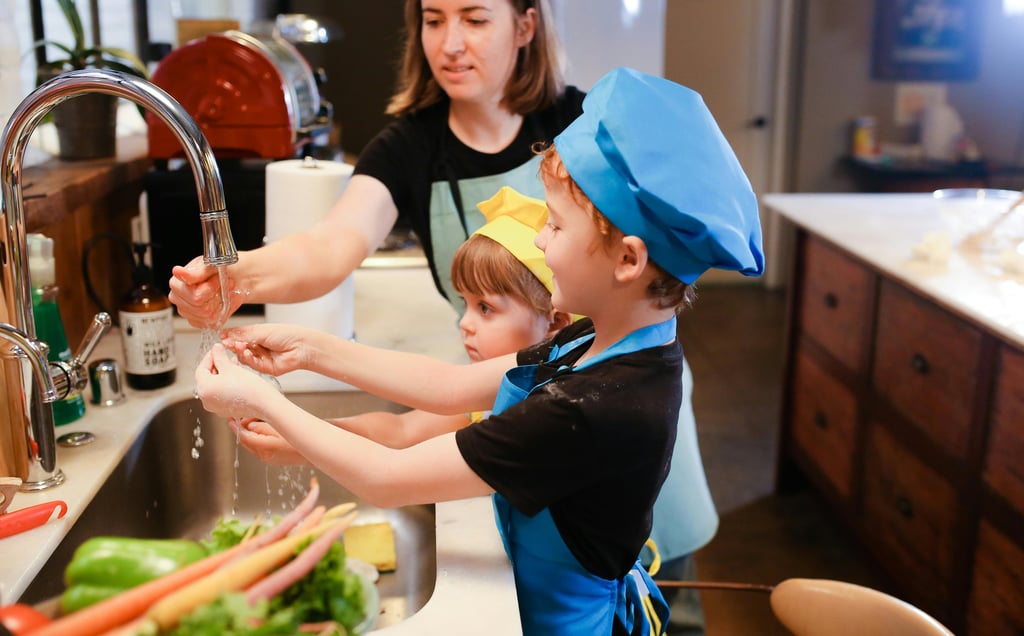10 Golden Rules of Food Hygiene You Can Use at Home
We all want to keep our loved ones healthy, and one of the easiest ways to do that starts right in your kitchen. You don’t need to be a professional chef to practice food safety—just a few small habits can go a long way in preventing foodborne illness. From grocery shopping to leftovers, here’s your go-to guide to making food hygiene simple, effective, and a natural part of your daily routine.
4/12/20253 min read


Why Food Hygiene Matters at Home
We often think of food safety as something that restaurants or manufacturers need to worry about. But in truth, most cases of foodborne illness actually happen at home. Whether it’s from undercooked meat, cross-contamination, or spoiled leftovers, poor hygiene in the kitchen can lead to unpleasant (and even dangerous) consequences.
Luckily, preventing those issues is easier than you think. Let’s break down the top 10 simple habits you can start using today.
1. Gloves Optional, But Clean Hands Are Non-Negotiable
At home, you probably don’t need to wear gloves when cooking—but your hands need to be squeaky clean. Before prepping food, after handling raw meat, or even after touching your phone, take 20 seconds to wash your hands with soap and water.
Germs love a free ride, and our hands are like the express train. Clean hands stop bacteria in their tracks and keep your food (and family) safe.
2. Use It Before You Lose It
Ever found a mystery container in the fridge that might be from last month’s dinner party? Let’s avoid that.
One of the best tricks is following the “First In, First Out” (FIFO) method. When putting groceries away, move older items to the front so you use them first. This prevents waste and helps make sure you're eating food while it's still fresh and safe.
3. Label Leftovers Like a Pro
Leftovers are awesome—until you forget what they are or how long they’ve been sitting there. Keep a roll of masking tape and a marker in your kitchen and label containers with the contents and the date.
You’ll never second-guess that tomato soup again.
4. Wash, Rinse, and Repeat Your Produce
Even fruits and veggies that look clean can carry bacteria. Give them a rinse under cold running water—even if you plan to peel them. Bacteria on the outside can transfer to the inside when cutting.
After rinsing, dry them off with a clean towel. This simple habit reduces your risk of foodborne illness without any special tools or cleaners.
5. Temperature Matters—Hot and Cold
Food should be kept at safe temperatures—either hot or cold. Bacteria multiply quickly in the “danger zone” between 40°F and 140°F (5°C–60°C). That’s why cold foods should go in the fridge as soon as possible, and cooked meats should be kept hot until serving.
A small food thermometer is a great investment. For example, chicken should be cooked to at least 165°F (74°C). Trust the thermometer, not your guesswork.
6. Don’t Let Food Sit Out
After a big meal, it’s tempting to leave food out while you relax. But after two hours (or one hour if it’s hot outside), bacteria start to party.
If you’re not serving it soon, refrigerate or freeze leftovers right away. And remember the golden rule: “When in doubt, throw it out.”
7. Be a Recipe Follower
This one might surprise you: following a recipe isn’t just about taste—it’s about safety. Recipes often include correct cooking times and temperatures. Plus, knowing exactly what ingredients are in your meals is important for anyone with allergies.
Double-check packaged ingredients too. Sometimes brands change what’s inside without a big announcement.
8. Get Everyone on Board
Food safety is a team effort, even at home. If you live with others—partners, roommates, or kids—make sure they know the basics too.
Teach kids to wash hands before helping in the kitchen. Encourage anyone handling food to clean surfaces and store leftovers properly. It’s a great way to build good habits as a family.
9. Cross-Contamination? Not in Your House
One cutting board for raw chicken, another for veggies. Sound dramatic? It’s actually just smart.
Use separate utensils, plates, and surfaces for raw and cooked foods. Wash everything that touched raw meat or eggs before using it again. Cross-contamination is a major cause of foodborne illness, but it's totally avoidable with a little care.
And yes—wash your hands again after handling raw meat. We can’t say that enough.
10. Trust Your Gut—And Speak Up
If something looks or smells off, don’t take chances. Speak up. Whether you’re cooking with someone else or just questioning your own leftovers, it’s better to be cautious.
Food safety starts with awareness and confidence. If something doesn’t feel right, it probably isn’t.
A Safe Kitchen is a Happy Kitchen
Food safety doesn’t have to be complicated. These simple practices help protect you and your loved ones while making your kitchen a place of trust and comfort.
Start small. Wash your hands more often, label your leftovers, rinse your produce. These aren’t big changes—but they can make a big difference.
So the next time you step into your kitchen, remember: food hygiene is just another way of showing love.
Join us on Pinterest
letstalk@lorybs.com
© 2025. All rights reserved.
